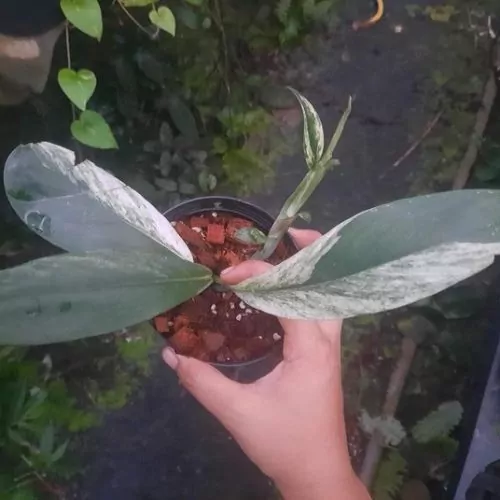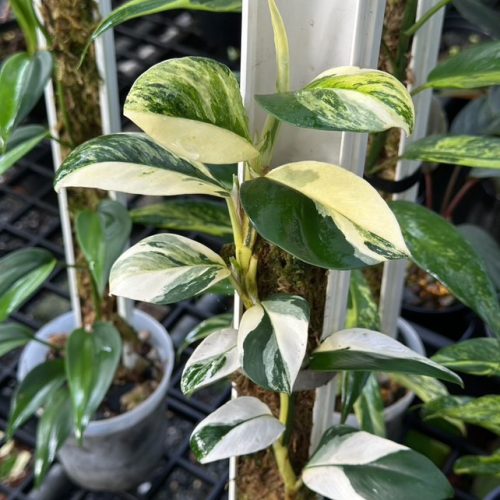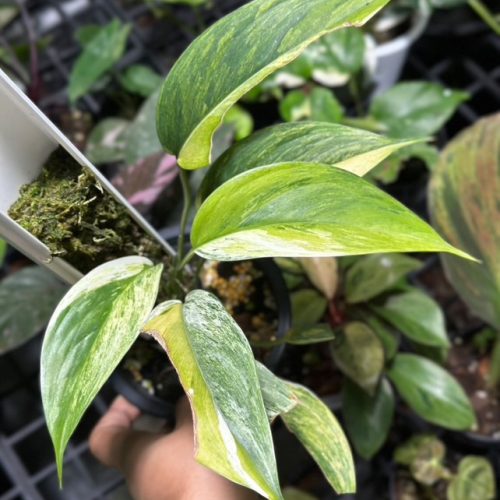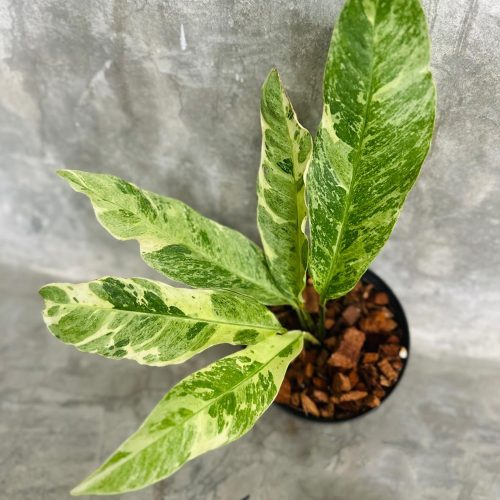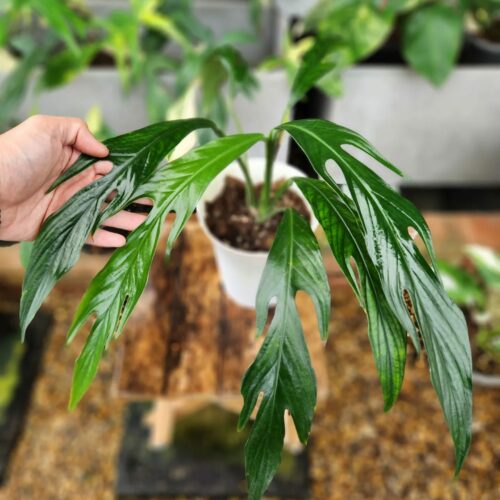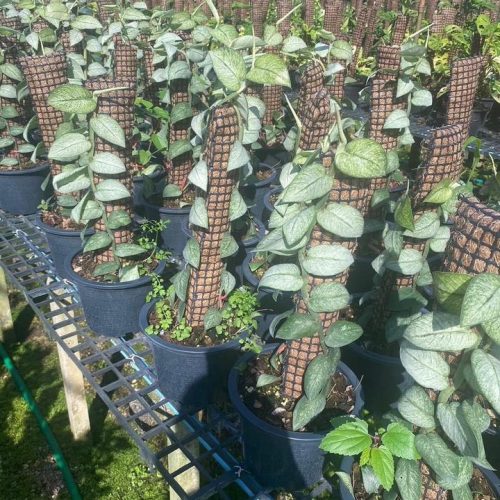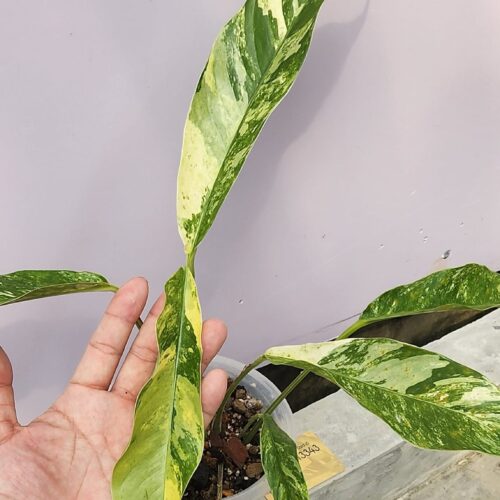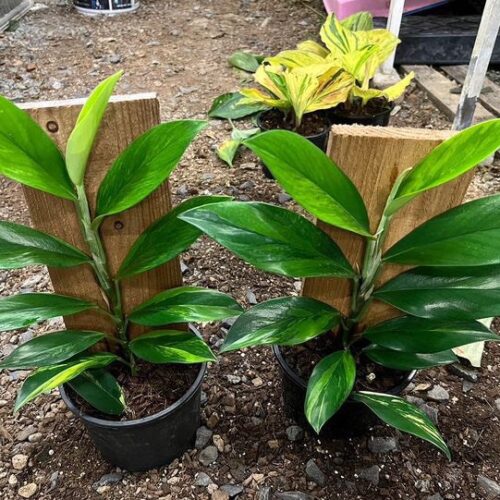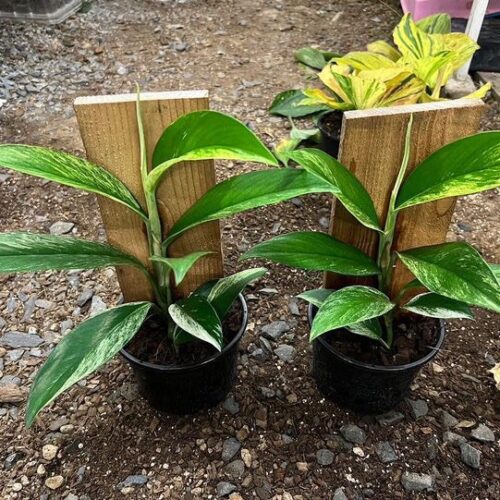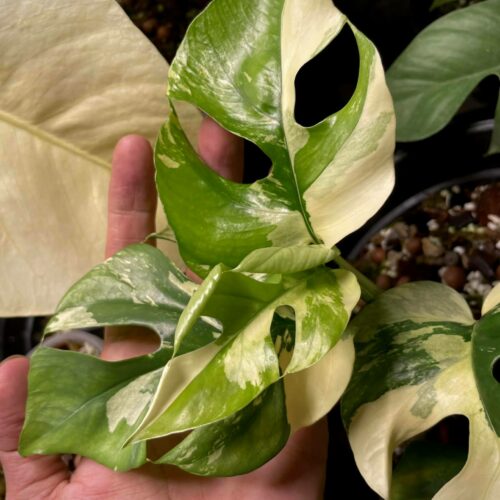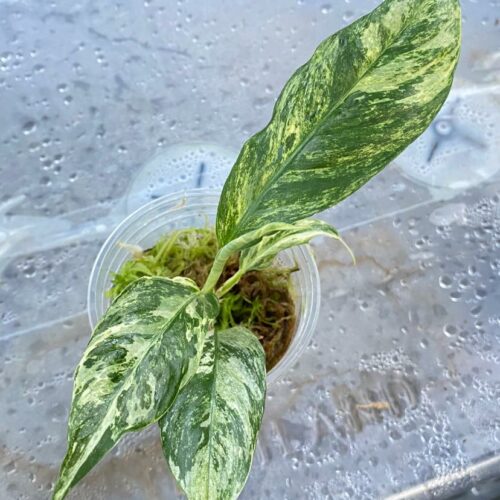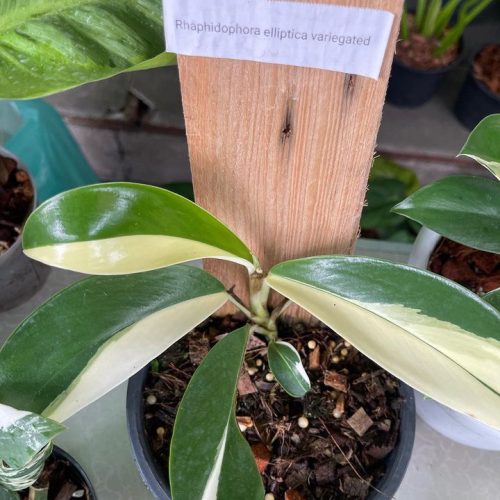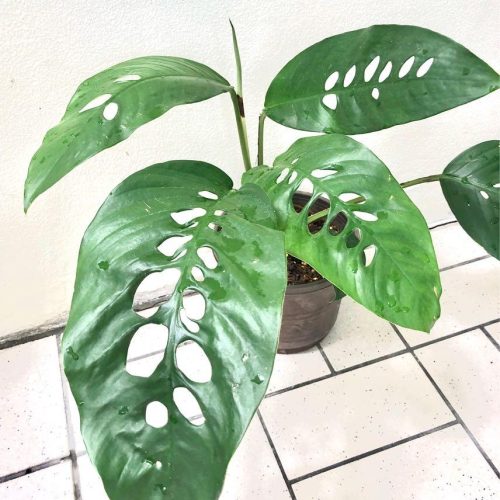Rhaphidophora foraminifera variegated, also known as Dragon Tail plants, are gorgeous tropical vines that can add major wow-factor to any indoor space. With their showy, colorful leaves featuring dramatic splits and holes set against a background of white variegation, it’s no wonder these plants have surged in popularity. However, caring for these beauties can seem intimidating for new plant parents. Follow these 5 essential secrets and your Dragon Tail plant will thrive for years to come!
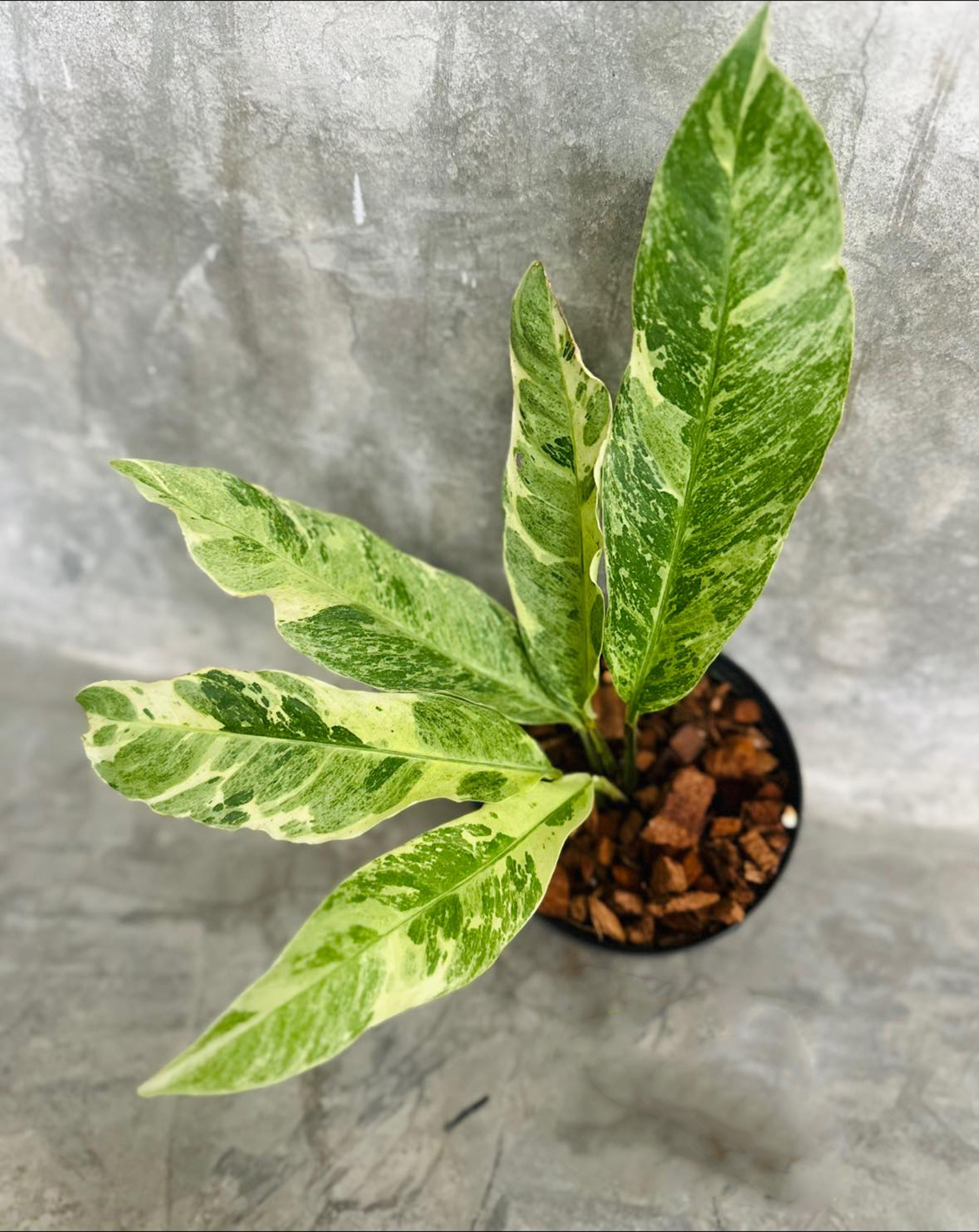
Proper Lighting is Key
Bright Indirect Light Optimal
Rhaphidophora foraminifera variegated thrive in bright, indirect light. Place them near a sunny window filtered by a sheer curtain. This protects the leaves from scorching while allowing plenty of sunlight. Variegated plants need sufficient light exposure to maintain their patterning. With too little light, all-green leaves may emerge instead of the desired white variegation.
Rotate Regularly
Rotate your plant weekly so all sides receive equal lighting. This encourages even growth and prevents stretching toward the light source. Pay attention to the direction of each leaf’s variegation and adjust as needed. The white portions should not become overly exposed to direct sun, which can burn the leaves. Gentle rotation allows even development.
“Understanding the native habitat of Rhaphidophora can offer more insights into their lighting needs. Dive deeper into the Rhaphidophora’s natural environment with our guide, Discover the Fascinating Rhaphidophora: A Comprehensive Overview.”
High Humidity is a Must
Provide Consistent Moisture
In their tropical native environment, these vines enjoy very high humidity. Recreate steamy jungle conditions at home by placing their pots on pebble trays. Fill the trays with water and allow evaporation to boost moisture levels around the leaves. Group other tropical plants nearby for a humidifying effect. Misting the leaves daily alsoadds a humidity boost.
Monitor with Hygrometer
Use a hygrometer to track moisture levels. Dragon Tail plants require 60% humidity or higher to prevent stressed, crispy leaves and maximize growth. Make adjustments as needed if humidity drops, whether moving to a steamier room or investing in a humidifier. Consistent moisture ensures healthy foliage.
“To replicate the Rhaphidophora’s rainforest habitat, proper humidity is crucial. Our document Discover the Fascinating World of Rhaphidophora Varieties provides detailed information on maintaining ideal humidity levels for these plants.”
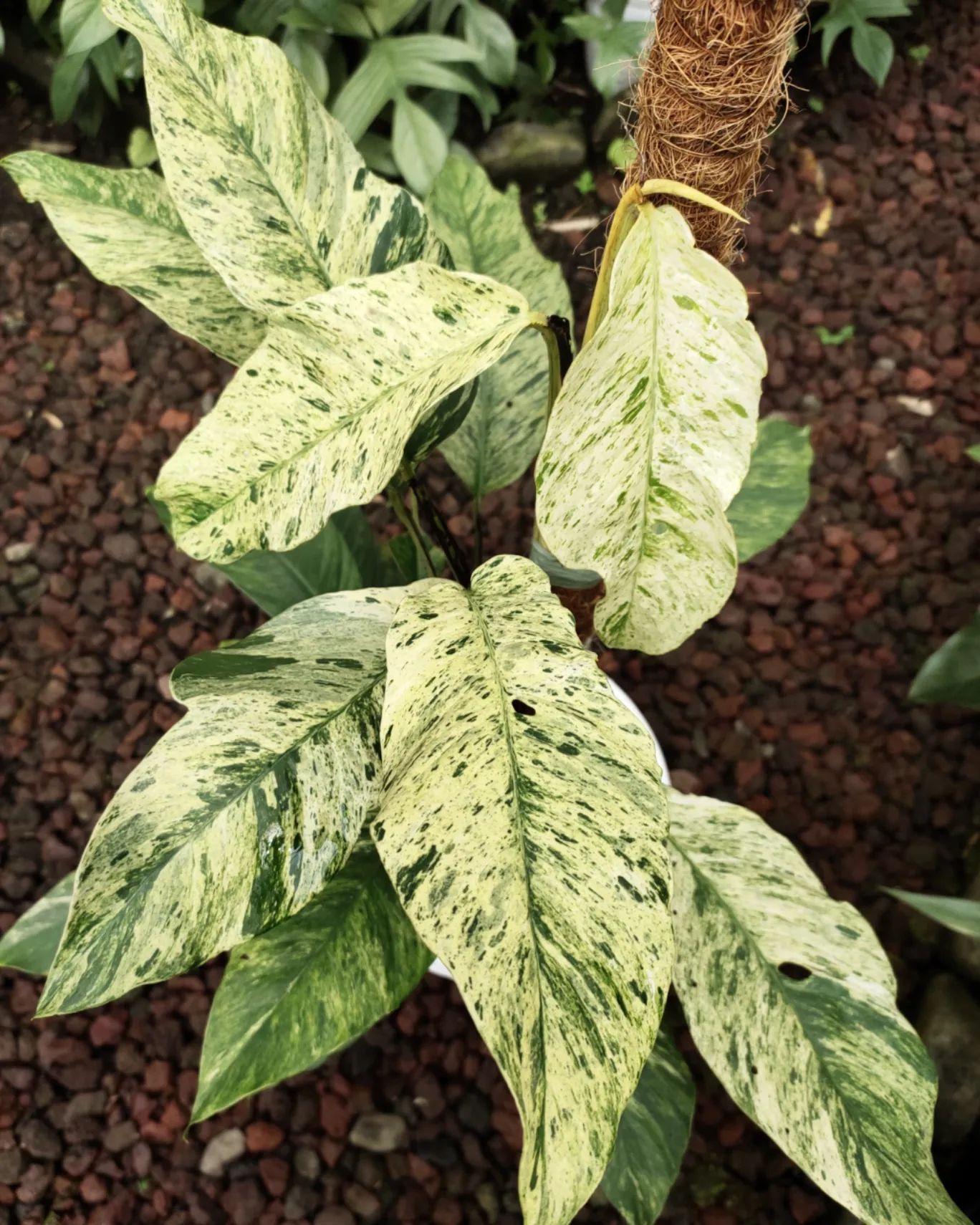
“Enhance your space with the stunning beauty of Rhaphidophora Foraminifera Variegated. Elevate your indoor jungle and add a touch of nature’s elegance to your home. Shop now and bring the vibrant charm of this unique plant into your life!”
Perfect Potting Mix
Well-draining Soil Vital
Provide an airy, fast-draining potting medium. A quality mix for orchids or aroids with ingredients like bark, perlite, charcoal and peat moss is ideal. This resembles the lightly textured soils of their native habitat. Dense, water-retentive soil will lead to root rot.
Fertilize Regularly
While porous soil provides good drainage, it does not retain much nutrition. Feed these heavy feeders with a balanced liquid fertilizer diluted to half strength. Fertilize every two weeks in the growing season to fuel lush growth. Reduce feeding frequency in winter. Rich soil ensures vibrant leaves.
“Choosing the right soil is critical for the health of your Rhaphidophora. For detailed soil recommendations, see our guide on 5 Best Soil Types To Grow Rhaphidophora At Home.”
Consistent Temperatures
Ideal Range is 60°F to 80°F
Dragon Tail plants thrive in warm conditions between 60-80°F, similar to tropical environments. Chilly drafts or temperature fluctuations can shock the plant, disrupt growth and damage leaves. Locate in the warmest area of the home without extreme direct heat. Maintain indoor temperatures within the ideal steady range.
Beware Cold Exposure
If exposed to temps below 50°F, the foliage can blacken or drop. When moving a Dragon Tail plant in/outdoors, allow time to adjust to the temperature change gradually. This prevents harm from sudden cold shock. Monitor both day and night temperatures to support vigorous expansion.
“To understand the temperature preferences of your Rhaphidophora, refer to our detailed document Discover the Beauty of Rhaphidophora Family Plants, which discusses the ideal climate conditions for these tropical vines.”
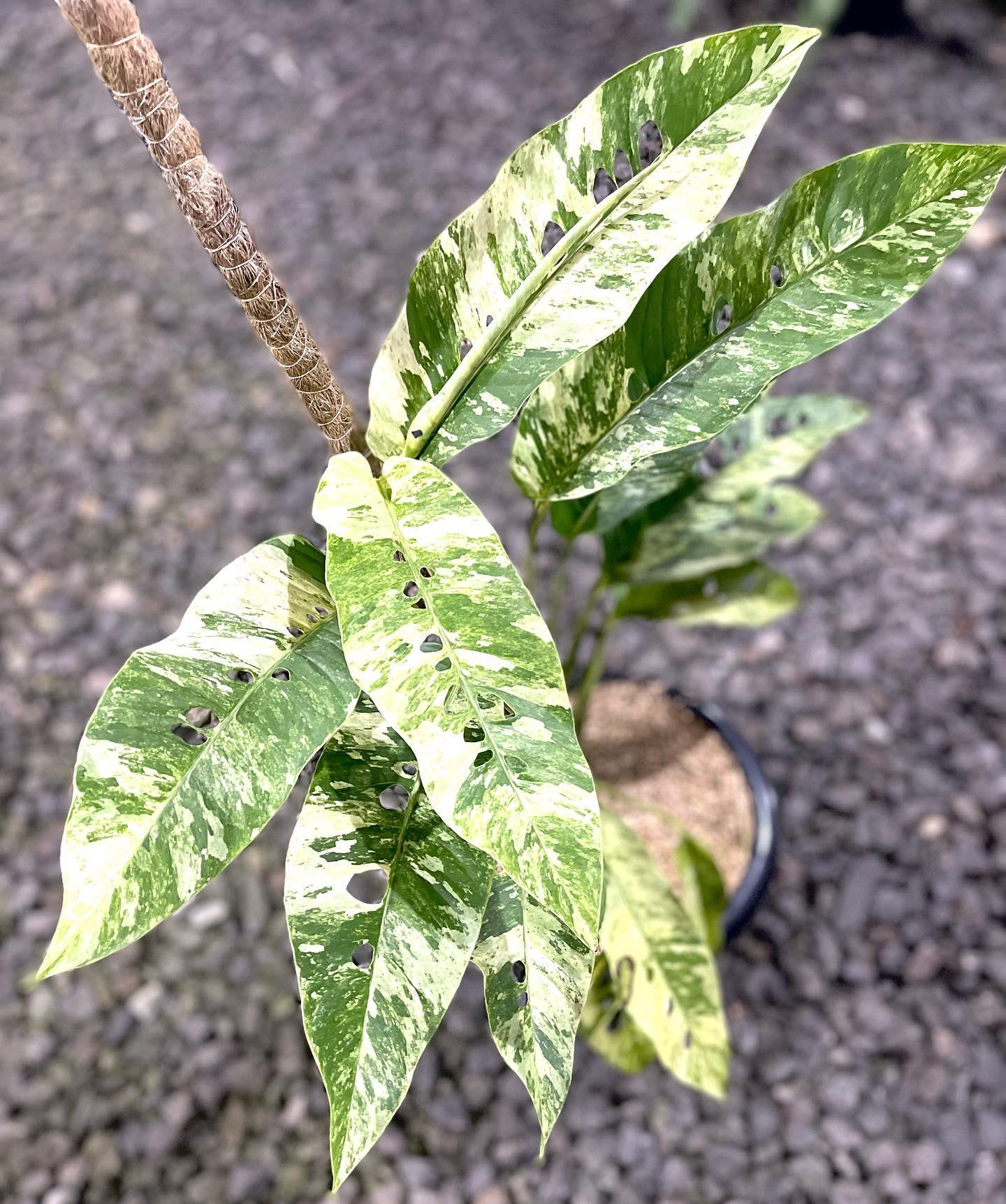
Attentive Care and Grooming
Water Thoroughly
Check soil moisture frequently, watering again when the top few inches become dry. Thorough, deep watering encourages extensive root development to support leafy new growth. After watering, dump out excess water in saucers to prevent soggy soil. Allow the pot to drain fully before replacing decorative cachepot.
Prune Damaged Areas
Remove any leaves that become overly crispy, yellowed or damaged to keep your plant looking its best. Sterilize pruners between each cut with isopropyl alcohol to avoid spreading disease. New stems will soon emerge from where old leaves detached. As a quick growing vine, pruning helps manage its enthusiastic spread.
Where to buy Rhaphidophora foraminifera variegated? Benefits from importing plants from Thailand
- Shipping: Door to door shipping, fast and safe with Dragon Courier
- Biodiversity: Thailand is known for its rich biodiversity, including a wide variety of aroid species. This diversity allows importers to access a broad range of unique and exotic aroid plants.
- Quality and Health of Plants: The suitable climate helps the plants grown here stay healthy and of high quality.
- Cost-Effectiveness: Due to favorable growing conditions and efficient production methods, Thai aroid plants can often be more cost-effective compared to those from other countries.
- Access to Hybrid Varieties: Thai growers are often involved in the development of new hybrid aroid varieties, offering unique plants that may not be available from other sources.
Rhaphidophora species are the most sought after by aroid plant lovers
Conclusion
A showstopper for indoor gardeners, rhaphidophora foraminifera variegated makes the effort worthwhile when properly cared for. Provide the light, humidity, soil, temperatures and attentive maintenance these tropical beauties require, and your Dragon Tail plant will flourish magnificently. Follow these crucial tips to keep your variegated stunner happy and healthy all year round!
FAQ
- What is Rhaphidophora Foraminifera Variegated?
- Rhaphidophora Foraminifera Variegated is a unique and beautiful tropical plant known for its variegated foliage. It belongs to the Araceae family and is popular among plant enthusiasts for its striking appearance.
- How do I care for Rhaphidophora Foraminifera Variegated?
- To care for Rhaphidophora Foraminifera Variegated, provide it with bright, indirect sunlight, keep the soil consistently moist but not waterlogged, and maintain a warm and humid environment. Regularly dust or clean its leaves to ensure proper growth.
- Is Rhaphidophora Foraminifera Variegated suitable for beginners?
- While this plant is not overly demanding, it may require some experience with tropical plants. If you’re a beginner, it’s essential to research its care requirements thoroughly and be prepared to provide the necessary conditions for its well-being.
- Can I propagate Rhaphidophora Foraminifera Variegated?
- Yes, you can propagate Rhaphidophora Foraminifera Variegated through stem cuttings or air layering. Both methods are effective, but stem cuttings are more common and straightforward for this plant.
- Is Rhaphidophora Foraminifera Variegated toxic to pets or humans?
- Rhaphidophora Foraminifera Variegated is considered mildly toxic to pets and humans if ingested. It’s essential to keep it out of reach of children and pets and wash your hands after handling the plant to avoid any potential irritation or discomfort.

